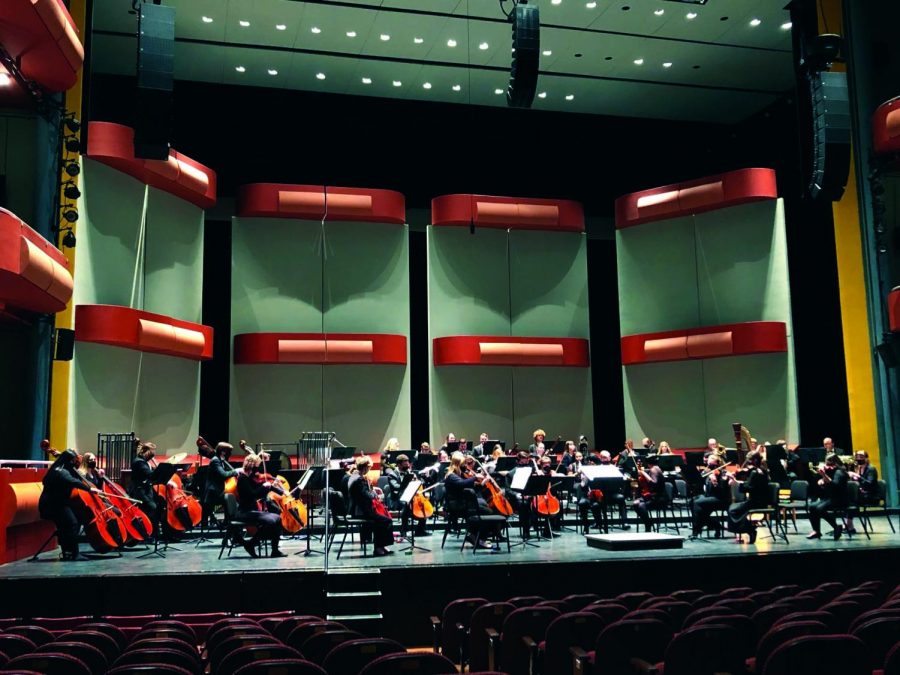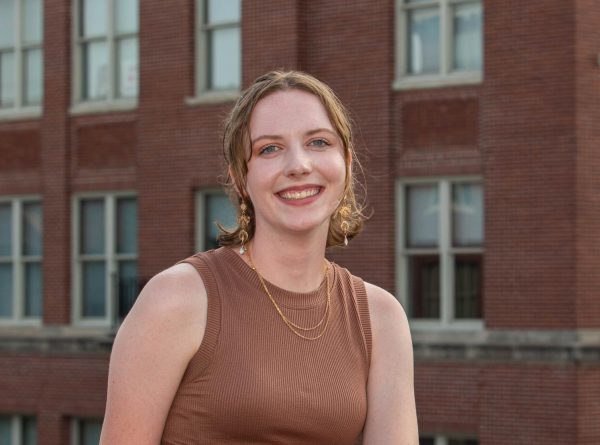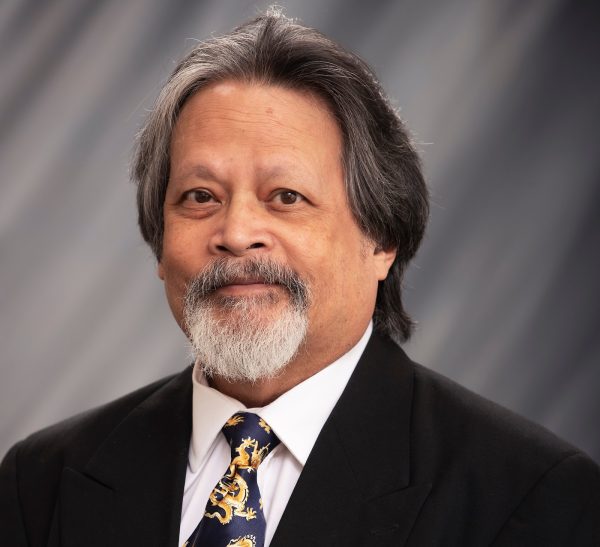UNI orchestra presents fall concert
The Northern Iowa Symphony Orchestra presented their Fall Spotlight Series concert performances Friday evening.
Nov 1, 2021
Program features Beethoven, Mozart, Glinka and Hidgon
Beethoven’s famous Symphony No. 5 reverberated from Gallagher Bluedorn Performing Arts Center Friday night as the Northern Iowa Symphony Orchestra, under the direction of Erik Rohde, presented their fall concert performance.
Along with performing Beethoven’s symphony, the orchestra played Mikhail Glinka’s “Ruslan and Ludmilla Overture,” “Blue Cathedral” by contemporary composer Jennifer Higdon, as well as a “Serenade in D, K.239 ‘Serenata notturna’” by Mozart featuring a faculty string quartet.
The orchestra’s fall performance was noticeably different than last year, with fewer COVID-19 precautions and more audience members. Many of the orchestra members were excited to see friends and family in the audience.
Sophomore violin player Emma Becker said, “I am most looking forward to seeing my orchestra teacher from middle school and high school in the audience. Having her there in person to show support to those of us who learned from her makes it extra special.”
Rohde notes there have been lingering issues with COVID-19, however the orchestra has remained flexible throughout this season allowing them to perform a somewhat normal concert experience. Additionally the orchestra has continued to follow some COVID-19 precautions.
Senior viola player Stephanie Ramos said, “The string section has made the commitment of wearing masks in rehearsal even though it is not required by the university so that we may all continue to make beautiful music together and keep eachother safe.”
“I can definitely sense a feeling of all of us needing to rebuild and recondition,” Rohde said. “Just because we did so much last year and now that we are sort of getting back to normal it feels like a lot more work.”
The orchestra opened their program with Glinka’s overture, a piece from an opera which is rarely performed today but whose overture still remains popular.
Higdon’s piece was the second piece in the program, and the only piece which featured a living composer. Becker notes Higdon’s piece as her personal favorite out of the program.
“Blue Cathedral contains melodies that give off a very heavenly sound from high notes that are played by the violins, flutes and piccolo to lush harmonies from the strings all together, to glorious fanfares with the brass,” Becker said. “It encompasses such a wide range in terms of style which makes it fun to play every time.”
Rohde also emphasized the uniqueness of Higdon’s piece. “It’s this beautiful, ethereal, kind of evocative piece. It’s actually one of the most commonly performed contemporary orchestra pieces. It uses all these special effects. There’s these bells and water glasses and all kinds of effects in the piece.”
After a brief set change, faculty members Sang Koh, Erik Rohde, Julia Bullard and Hannah Holman took the stage to perform Mozart’s “Serenata notturna,” along with the strings and the timpani.
The orchestra finished off the concert with Beethoven’s No. 5 symphony. The symphony is a classic orchestral piece which Rohde notes as a challenging but fun piece to play.
“There are really common sections that are taken out of this particular piece that are used for professional orchestra auditions,” Rohde said. “So for us to learn it and play those sections in context will hopefully help to prepare students for professional auditions in the future. It’s been a great piece to study.”
Ramos notes Beethoven’s piece as her favorite in the program.
“It is a well known symphony with a memorable theme in the beginning of the first movement,” Ramos said. “It is my favorite piece from what we played because Beethoven knew how to write fun parts for the viola that display how beautiful and lyrical our instrument can be.”
Ramos also commends Rohde for making orchestra a positive, inclusive experience.
“The orchestra is composed of both majors and non-majors who all share one thing in common, the desire to make beautiful music,” Ramos said. “Dr. Rohde does an incredible job of picking music that isn’t just by old, dead, white men. We have played music by Latinx, BIPOC, LGBTQ+ and women composers. I highly encourage anyone who plays a string instrument and enjoys playing challenging music to come audition and join.”














